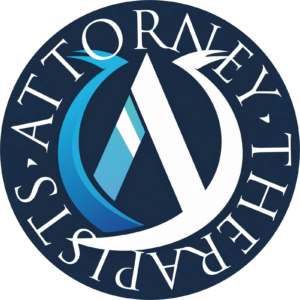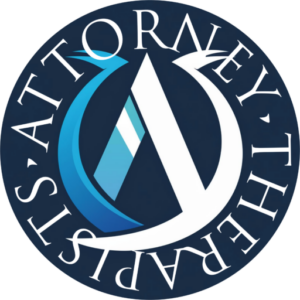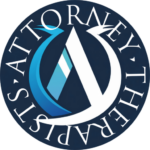Introduction
The legal profession in the United States has long been marked by high levels of stress, chronic overwork, adversarial conflict, and profound isolation. In recent years, these endemic stressors have been increasingly associated with elevated rates of alcohol use disorder (AUD) among practicing attorneys. A landmark 2016 study by the Hazelden Betty Ford Foundation and the American Bar Association Commission on Lawyer Assistance Programs found that approximately 21% of licensed, employed attorneys qualify as problem drinkers—a rate nearly double that of other highly educated professionals. Among younger attorneys (under 30), that rate approaches 32%, suggesting an even more perilous trajectory for new entrants into the profession.
While high stress and easy access to alcohol are well-documented risk factors, a deeper, more insidious mechanism may help explain the unusually high prevalence of AUD in the legal profession: the psychological structure of attorneys themselves. Trained to think in highly analytical, strategic, and goal-oriented ways, attorneys often possess a heightened sense of self-efficacy—the belief in one’s ability to execute goal-directed behavior and control outcomes. While beneficial in litigation and negotiation, this mindset becomes a formidable barrier to acknowledging and addressing alcohol use disorder, a condition that, paradoxically, requires the surrender of control, not the reinforcement of it.
Diagnostic Criteria for Alcohol Use Disorder
The Diagnostic and Statistical Manual of Mental Disorders, Fifth Edition (DSM-5) defines Alcohol Use Disorder as a problematic pattern of alcohol use leading to clinically significant impairment or distress, manifested by at least two of the following within a 12-month period:
(1) Alcohol is often taken in larger amounts or over a longer period than was intended.
(2) Persistent desire or unsuccessful efforts to cut down or control alcohol use.
(3) A great deal of time spent in activities necessary to obtain, use, or recover from alcohol’s effects.
(4) Craving or a strong desire or urge to use alcohol.
(5) Recurrent alcohol use resulting in a failure to fulfill major role obligations at work, school, or home.
(6) Continued use despite persistent or recurrent social or interpersonal problems caused or exacerbated by alcohol.
(7) Important social, occupational, or recreational activities are given up or reduced because of alcohol use.
(8) Recurrent use in situations where it is physically hazardous.
(9) Continued use despite knowledge of having a persistent or recurrent physical or psychological problem likely caused or exacerbated by alcohol.
(10) Tolerance, as defined by either (a) a need for markedly increased amounts to achieve intoxication or (b) a markedly diminished effect with continued use of the same amount.
(11) Withdrawal, as manifested by (a) characteristic withdrawal syndrome or (b) alcohol taken to relieve or avoid withdrawal symptoms.
Severity is classified as mild (2–3 criteria), moderate (4–5 criteria), or severe (6 or more criteria).
The Illusion of Control: Analytical Thinking and Self-Efficacy as Barriers to Recovery
Attorneys are professionally trained to anticipate contingencies, identify risks, and manipulate facts and arguments to shape outcomes. This orientation often extends beyond the courtroom and into their personal lives. The cognitive style reinforced through legal education and practice privileges rationality, control, and instrumental thinking—hallmarks of what the American psychologist Albert Bandura termed self-efficacy. While essential to professional success, this belief system is often maladaptive when confronting addiction.
In cases of alcohol use disorder, attorneys typically default to the assumption that increased willpower, discipline, or behavioral monitoring will resolve their problems. This approach mimics the logic of litigation strategy or client management: assess the problem, construct a plan, and implement control. But addiction, by definition, defies control. The harder one tries to “manage” or “moderate” alcohol use using these tools, the more one becomes entangled in cycles of obsession, relapse, and rationalization.
This results in what psychologists term the “control paradox”: those who most desperately cling to control are the least likely to recover. The attorney’s belief in his or her ability to outthink the addiction becomes its own trap. Each failed attempt to moderate or abstain further erodes self-esteem and deepens the resolve to regain control—creating a demoralizing loop of effort, failure, and self-recrimination.
The Paradox of Letting Go: Toward a New Paradigm of Recovery
Successful recovery from alcohol use disorder requires a paradigm shift—away from instrumental control and toward experiential acceptance. This shift often begins with an acknowledgment of what recovery programs such as Alcoholics Anonymous (AA) refer to as “powerlessness”—the admission that one cannot safely use alcohol under any circumstances, and that self-will alone is insufficient to overcome the compulsion to drink.
For attorneys, this admission often feels like professional heresy. It cuts against the grain of everything their training and identity have reinforced. To accept powerlessness is to surrender the illusion of mastery, to admit fallibility, and to tolerate discomfort without seeking immediate resolution.
But it is precisely this experiential exposure to discomfort, without engaging in avoidance behaviors such as alcohol use, that lays the foundation for sustainable recovery. Through structured programs of abstinence and mindfulness-based or experiential therapies, attorneys can gradually develop the capacity to allow emotional and psychological discomfort to unfold without the need to fix, solve, or escape it. In doing so, they reclaim the very agency that alcohol use has eroded.
Over time, this practice cultivates a new form of confidence—not in one’s ability to control outcomes, but in one’s ability to meet life as it unfolds, including its ambiguity, vulnerability, and pain. This transformation does not occur through cognition alone; it requires lived experience—through fellowship, guided practice, and spiritual or values-based reflection.
Abstinence as the Only Viable Path
There is no evidence that attorneys with moderate or severe AUD can achieve lasting health through moderation. The disorder is characterized by impaired control, meaning that once alcohol is reintroduced, the compulsion to continue often returns with full force. Yet the attorney’s rational mind clings to the idea that moderation is possible, often citing examples of “controlled drinking” in peers or using cognitive distortions to justify relapse.
What becomes essential, then, is the internalization—not mere intellectual understanding—of the inviability of moderation. Abstinence is not a failure of self-control; it is an affirmation of one’s commitment to live fully and authentically without the deadening buffer of intoxication. The path to abstinence is rarely linear and often requires external support, structured interventions, and a commitment to ongoing reflection and self-awareness.
Conclusion
Attorneys suffering from alcohol use disorder are uniquely challenged by the very psychological traits that make them successful in the practice of law. Their analytical minds and high self-efficacy become barriers to recovery, reinforcing the illusion that addiction can be outthought, moderated, or controlled through will alone.
Recovery demands a reversal of these assumptions. It requires that the attorney learn to let go—not in defeat, but in strength. By relinquishing attachment to predetermined outcomes and embracing the organic unfolding of experience, attorneys can cultivate the resilience necessary to navigate the human condition without relying on alcohol. In this letting go, paradoxically, lies their truest power.
References
-
American Psychiatric Association. Diagnostic and Statistical Manual of Mental Disorders, 5th Edition (DSM-5), 2013.
-
Krill, P. R., Johnson, R., & Albert, L. (2016). The Prevalence of Substance Use and Other Mental Health Concerns Among American Attorneys. Journal of Addiction Medicine, 10(1), 46–52.
-
Bandura, A. (1977). Self-Efficacy: Toward a Unifying Theory of Behavioral Change. Psychological Review, 84(2), 191–215.
-
Alcoholics Anonymous. (2001). Alcoholics Anonymous: The Big Book (4th ed.).









